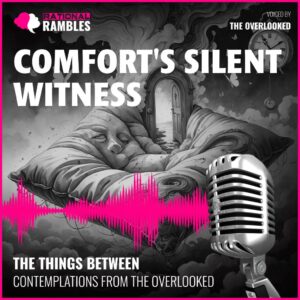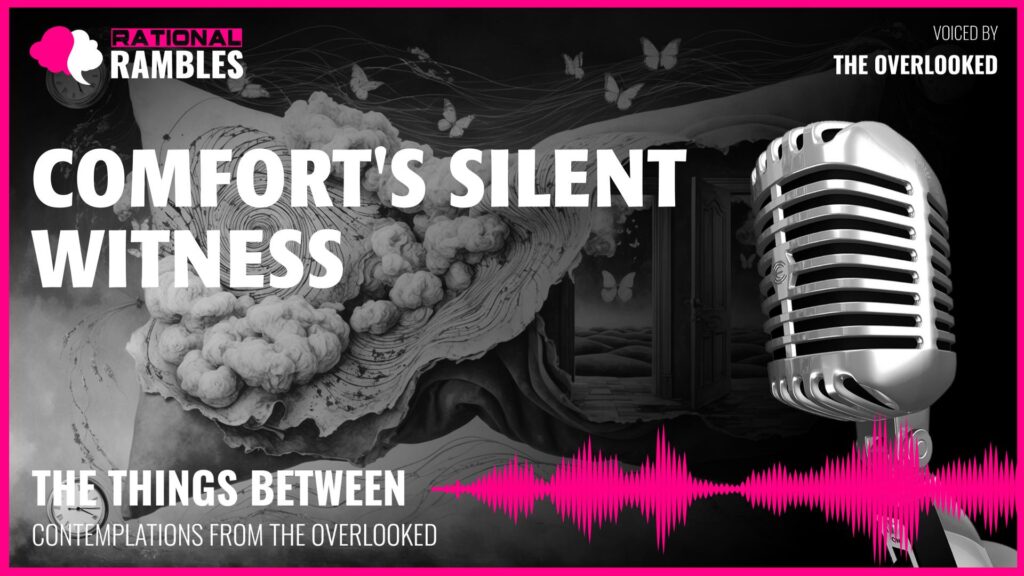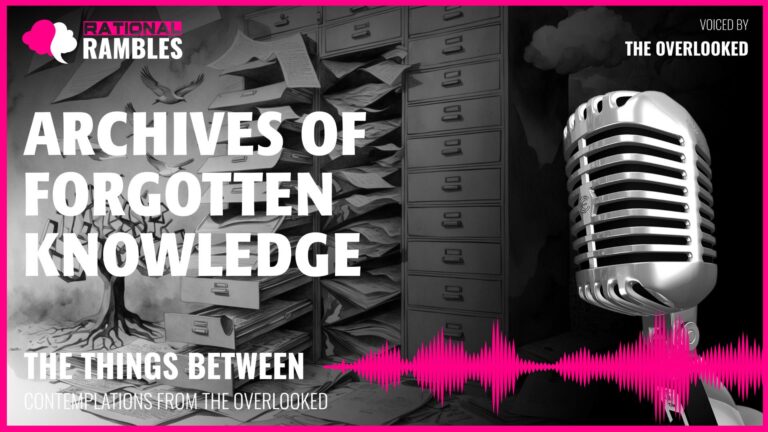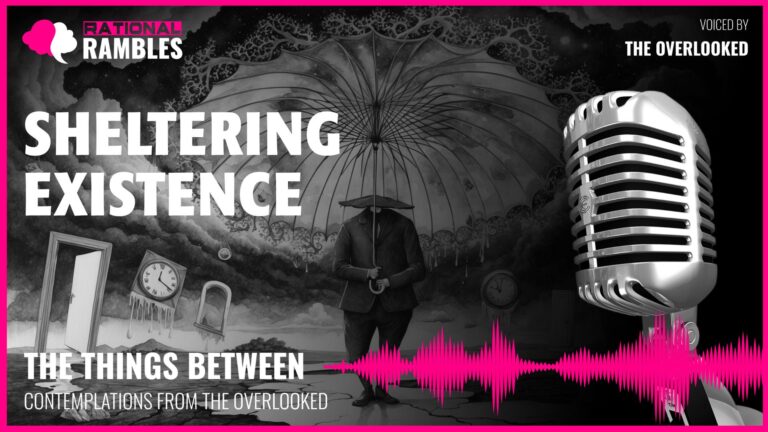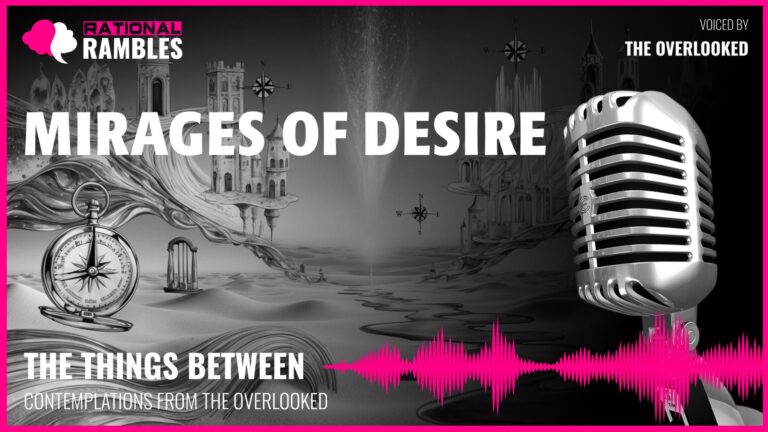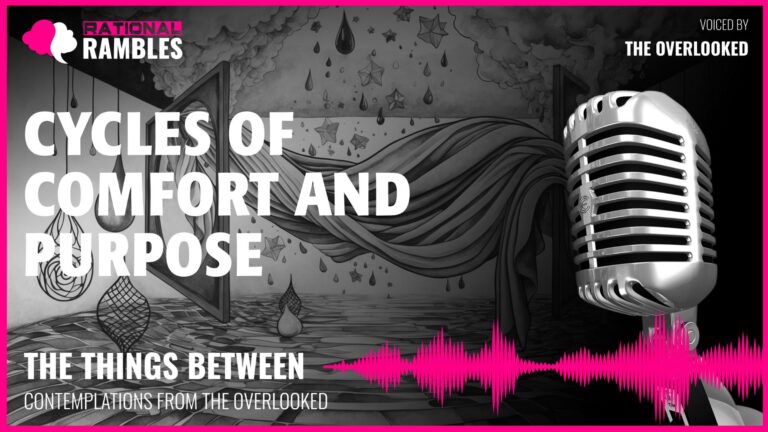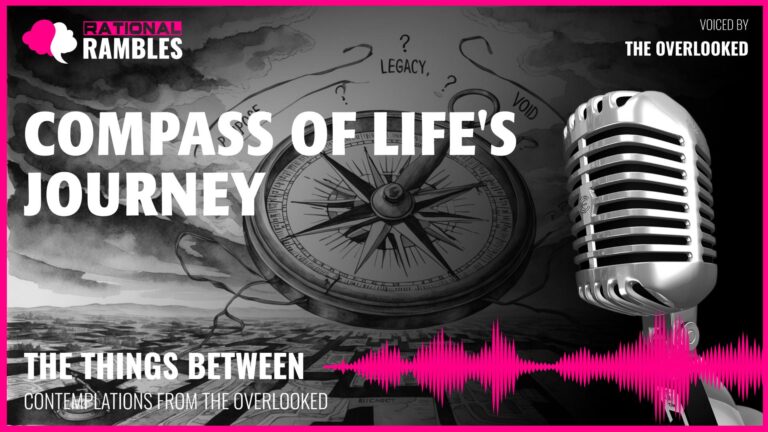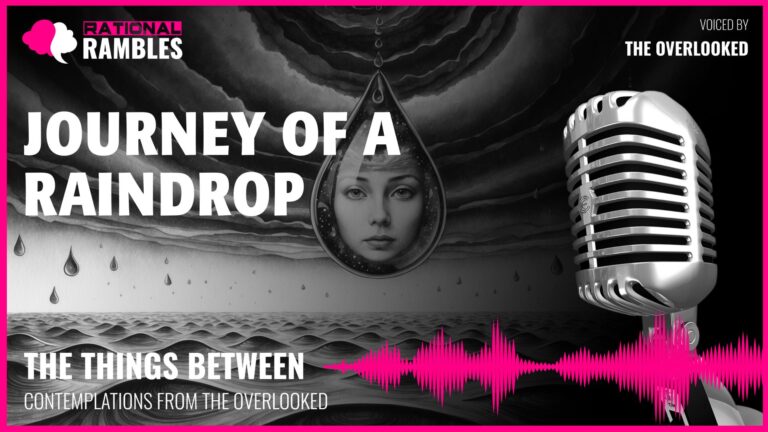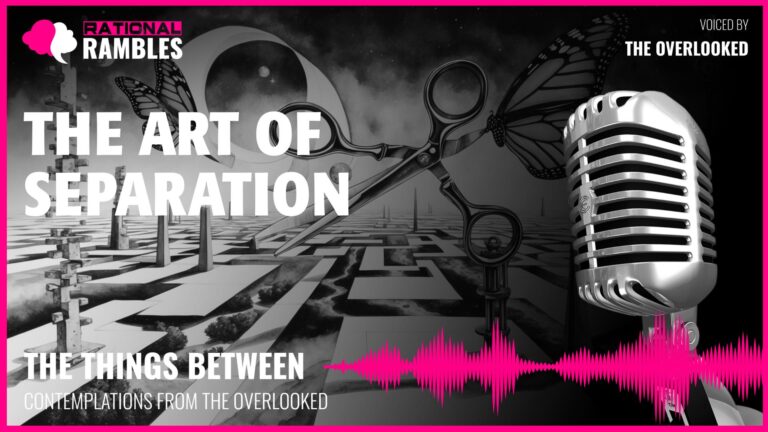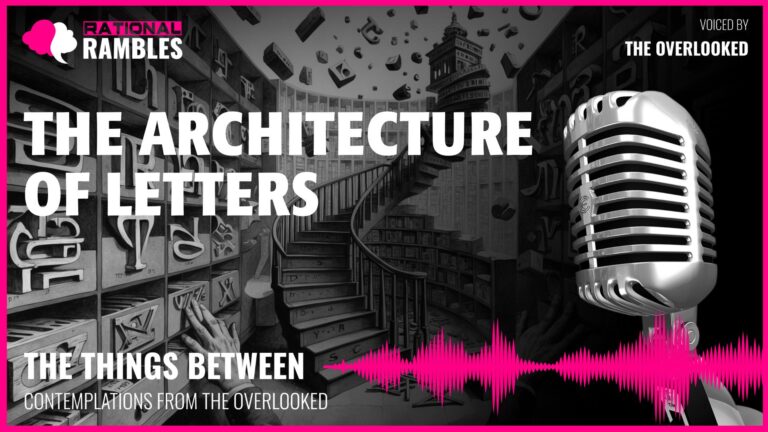The Silent Witness: Exploring the Intimacy of Unconscious Existence
Introduction
In the vast theater of human experience, there exists a peculiar threshold between our conscious endeavors and our unconscious wanderings – the moment when awareness gives way to the mysterious realm of sleep. This liminal space represents one of the most profound philosophical frontiers in our understanding of consciousness, vulnerability, and the nature of comfort. What happens at this threshold, and what might it reveal about our deeper human condition?
Our waking selves construct elaborate narratives of identity, carefully curated and presented to the world. Yet each night, we willingly surrender this conscious control as we cross into the domain of dreams. This daily transition raises profound questions about the continuity of self, the nature of vulnerability, and the often overlooked intimacy we share with the objects that support our unconscious journeys.
This article explores the philosophical dimensions of this threshold experience, examining how our unconscious states might offer more authentic expressions of our being than our waking performances. By considering the passive witnesses to our most vulnerable moments, we may gain insight into the nature of comfort, the architecture of intimacy, and the silent impressions we leave behind as we traverse between consciousness and unconsciousness night after night.
The Ontology of Comfort
Comfort, as a concept, exists at a curious philosophical intersection – simultaneously physical and psychological, objective and deeply subjective. While we often reduce comfort to the mere absence of discomfort, this understanding fails to capture its profound existential dimensions.
Beyond the Absence of Discomfort
Traditional conceptions of comfort often frame it negatively – as the absence of pain, distress, or inconvenience. However, this reductive definition neglects comfort’s positive attributes and deeper significance. True comfort does not merely eliminate negative sensations; it creates a positive condition that enables vulnerability, surrender, and freedom.
Consider that the most profound comfort often occurs not in states of perfect ease but in contexts that allow us to safely experience complexity. A parent’s embrace provides comfort to a distressed child not by eliminating the source of distress but by creating a safe harbor within which those emotions can be processed. Similarly, the comfort we seek at day’s end is not simply physical relief but a sanctuary that permits the mind’s complex nocturnal journeys.
Philosopher Gaston Bachelard, in his work The Poetics of Space, explored how intimate spaces shape our psychological experience. He argued that comfort derives from spaces that allow us to dream – not merely to rest but to engage in the essential work of imagination and unconscious processing. In this view, comfort becomes not a passive state but an active enabler of our most profound inner experiences.
Comfort as Enablement
Perhaps a more philosophically rich understanding of comfort views it as a state that enables vulnerability, exploration, and transformation. Comfort, in this conception, serves as the necessary foundation for our most complex psychological processes.
When we seek comfort at night, we are not merely pursuing physical ease but creating conditions that permit the surrender of conscious control. This surrender enables dreams, memory consolidation, emotional processing, and the integration of daily experiences. Comfort becomes not an end but a means – the condition that facilitates our mind’s most essential, if mysterious, work.
This reframing has profound implications. If comfort enables vulnerability, and vulnerability enables authenticity, then comfort becomes a prerequisite for accessing our most genuine selves. The objects and spaces that provide comfort are not merely serving physical functions but facilitating existential ones – they are the silent collaborators in our journey toward self-knowledge and integration.
The Ethics of Comfort
This understanding of comfort also suggests an ethical dimension often overlooked in our utilitarian approach to supportive objects. If certain items enable our most vulnerable states, they operate within a complex web of trust, intimacy, and silent witnessing that raises important philosophical questions.
What obligations might arise from being the recipient of unconscious vulnerability? While we typically consider ethical relationships as occurring between conscious entities, perhaps there exists an unacknowledged ethical dimension to our relationship with the objects that support our unconscious states. These objects receive our unfiltered emotional expressions, bodily fluids, unconscious movements, and sleep-talking admissions – all without our conscious consent yet with our implicit trust.
Martin Buber’s philosophical framework of I-Thou relationships might be expanded here. Though Buber reserved the I-Thou relationship for encounters between conscious beings, there is something in our relationship with intimate objects that transcends the merely instrumental I-It relationship. We entrust these objects with our most vulnerable states in a relationship characterized by surrender rather than use.
The Threshold of Consciousness
Sleep represents one of the most profound philosophical puzzles in human experience – a state we enter daily yet understand poorly. The threshold between waking and dreaming consciousness raises fundamental questions about the nature and continuity of self.
The Paradox of Surrendered Consciousness
Each night, humans willingly surrender the consciousness that we otherwise jealously guard and consider essential to our identity. This voluntary relinquishment presents a fascinating philosophical puzzle: if consciousness is so central to our conception of selfhood, how do we so readily set it aside? And what does this nightly surrender reveal about the nature of consciousness itself?
William James, the pioneering psychologist and philosopher, suggested that consciousness might be better understood as a process rather than a fixed state – a “stream” characterized by constant flow and change rather than stable presence. Sleep, in this framework, represents not the absence of consciousness but its transformation into a different mode of operation.
This perspective challenges our binary thinking about consciousness and unconsciousness. Perhaps sleep does not represent consciousness’s opposite but rather its alteration – a different way of processing experience and relating to the world. The threshold between waking and sleeping would then be not a boundary between presence and absence but a transformation point between modes of being.
Dreams as Unfiltered Truth
Dreams have occupied philosophers since antiquity. Plato suggested in The Republic that dreams reveal desires suppressed during waking life, while Freud would later develop this insight into his theory of the unconscious. Contemporary neuroscience supports aspects of these views, suggesting that dreaming involves the processing of emotional experiences and the integration of new memories with existing knowledge.
What unites these diverse perspectives is the recognition that dreams often express truths that conscious awareness might suppress or reshape. Without the censoring influence of social convention and conscious identity maintenance, dreams can reveal desires, fears, and insights that waking life obscures.
This raises a provocative question: might our sleeping selves be more honest than our waking ones? If dreams represent unfiltered processing of experience, unconstrained by social performance and identity management, they may constitute a more authentic expression of selfhood than our carefully constructed waking narratives.
French philosopher Michel Foucault examined how social norms and power structures shape our conscious self-presentation and even our self-understanding. Perhaps sleep temporarily liberates us from these constraining forces, allowing more authentic expressions of being to emerge in the form of dreams, unconscious movements, sleep-talking, and other unveilings that occur at the threshold of consciousness.
The Continuity Problem
The nightly transition between consciousness and sleep also raises the philosophical problem of personal continuity. If consciousness is interrupted each night, what ensures that the person who awakens is the same as the one who fell asleep? This question echoes the famous thought experiment of Theseus’s ship – if every plank is gradually replaced, does it remain the same ship?
John Locke proposed that personal identity persists through memory – we are the same person over time because we remember our past experiences. Yet dreams are notoriously difficult to remember, with most forgotten shortly after waking. Does this suggest a discontinuity in selfhood, or might there be other mechanisms that maintain identity through unconscious states?
An alternative perspective comes from philosophers like Daniel Dennett, who suggest that the self is not a fixed entity but a “center of narrative gravity” – a story we tell about our experiences rather than a substantial reality. In this view, sleep doesn’t interrupt selfhood because selfhood itself is constructed rather than intrinsic, assembled freshly each morning from available memories and ongoing bodily continuity.
The threshold between waking and sleeping thus becomes a fertile ground for exploring fundamental questions about the nature of consciousness, the construction of selfhood, and the authenticity of our different modes of being.
The Phenomenology of Vulnerability
Sleep represents perhaps our most vulnerable state – a condition in which consciousness is suspended, awareness of surroundings diminishes, and the careful presentation of self gives way to unfiltered expression. This vulnerability raises profound phenomenological questions about human existence and interpersonal intimacy.
The Unguarded Self
Phenomenology, as developed by philosophers like Edmund Husserl and Maurice Merleau-Ponty, concerns itself with the structures of experience from the first-person perspective. From this viewpoint, sleep represents a radical alteration in our being-in-the-world – a state in which the carefully maintained boundaries between inner and outer experience temporarily dissolve.
In waking life, we maintain what sociologist Erving Goffman called a “presentation of self” – a consciously managed performance designed for social consumption. This performance involves physical composure, emotional regulation, and narrative consistency. Sleep strips away these performative elements, revealing what might be considered a more authentic, if less coherent, expression of selfhood.
The drooling, twitching, mumbling, and facial contortions that emerge during sleep represent bodily expressions unmediated by conscious control. Similarly, the content of dreams – with their bizarre logic, emotional intensity, and freedom from social constraints – reveals mental processes unfettered by waking rationality and social convention.
This unguarded state raises a profound question: Is the sleeping self more “authentic” than the waking self? The philosophical tradition of existentialism, particularly as articulated by Jean-Paul Sartre, emphasized authenticity as freedom from bad faith and social performance. Perhaps sleep, in temporarily liberating us from self-consciousness and social performance, allows for expressions of selfhood untainted by what Sartre called “the gaze” of others.
The Body’s Truth
Merleau-Ponty’s phenomenology emphasized the primacy of the body in human experience, challenging Cartesian dualism by asserting that consciousness is fundamentally embodied. Sleep provides striking evidence for this perspective, as the body continues to express emotional states even when consciousness is altered.
The physical manifestations of dreams – rapid eye movements, changes in breathing patterns, muscle twitches, vocalizations – suggest that emotional processing continues through bodily expression even in unconscious states. The body, in sleep, reveals truths that conscious articulation might conceal or reshape.
This observation aligns with contemporary emotional theories suggesting that bodily responses often precede conscious awareness of feelings. Neuroscientist Antonio Damasio’s “somatic marker hypothesis” proposes that emotions manifest first as bodily states, with conscious feelings emerging subsequently. Sleep, by removing conscious interpretation while preserving bodily response, may offer a window into emotional processing in its most unfiltered form.
The philosophical implication is significant: if the body expresses emotional truths during sleep that conscious awareness might reshape or deny, then bodily knowledge may constitute a form of understanding that precedes and sometimes contradicts conscious knowledge. Sleep reveals the body’s wisdom, its autonomous emotional processing operating beyond the reach of conscious control.
The Intimacy of Unconscious Disclosure
Our sleeping state creates a unique form of interpersonal disclosure. Those who witness our sleep – whether partners, parents, children, or caregivers – gain access to expressions of selfhood that we ourselves may never know. This creates an asymmetrical intimacy: they know aspects of our being that remain hidden even from ourselves.
Philosopher Emmanuel Levinas explored how the face of another person makes an ethical demand upon us – the vulnerable face of another human being calls us to responsibility. The sleeping face, completely unguarded and exposed, perhaps represents this vulnerability in its purest form. To witness another person sleeping is to encounter them in a state of complete defenselessness, creating a profound ethical responsibility that precedes any conscious social contract.
This unconscious disclosure extends beyond the visual to include sounds, movements, and even physiological expressions like tears or sweat. These involuntary expressions create a form of truth-telling beyond language – a direct communication unmediated by conscious filtering or social performance.
Martin Buber’s distinction between I-It and I-Thou relationships takes on new dimensions here. The sleeping person cannot be related to as an object of observation without violating the profound vulnerability they display. To witness sleep respectfully requires entering into a kind of I-Thou relationship with someone who cannot reciprocate in that moment – an asymmetrical ethical encounter that challenges conventional understandings of interpersonal relations.
Traces and Impressions: The Philosophy of Remains
Human existence leaves impressions – physical, emotional, and symbolic traces that persist beyond our immediate presence. The philosophy of remains examines what these traces reveal about the nature of identity, time, and the physical embodiment of experience.
The Physical Archive of Experience
Our bodies constantly shed physical traces – skin cells, hair, bodily fluids, warmth, scent. These biological remains constitute a distributed physical archive of our existence, fragments of selfhood dispersed into our environment. This dispersion challenges the notion of clear boundaries between self and surroundings, suggesting instead a permeable relationship in which we literally become part of our environment through these physical deposits.
French philosopher Michel Serres explored this concept through what he called “mingled bodies” – the idea that human existence involves a constant exchange with the environment, blurring the boundaries between self and world. From this perspective, the physical traces we leave behind are not separate from us but extensions of our embodied existence distributed in space and time.
When these physical remains are collected by intimate objects – absorbed into fabrics, impressed into surfaces – they create a material record of presence. This record is particularly pronounced in items that receive our unconscious body over extended periods. They become, in effect, unintentional archives of physical existence, preserving traces that would otherwise disperse and disappear.
Impressions and Memory
Beyond physical remains, our bodies leave impressions – literally reshaping the objects with which we have intimate contact. These impressions function as a kind of external memory, recording patterns of use, habitual positions, and the specific contours of our physical form.
Philosopher Edward Casey has explored how places and objects participate in memory, arguing that memory is not merely contained within individual minds but distributed across our material environment. The impressions left in intimate objects become part of this distributed memory system – physical records that persist even when mental recollection fades.
These impressions raise interesting questions about the relationship between identity and its material expressions. If the specific shape of an impression is unique to an individual body, does that impression contain something essential about that person? Does it constitute a kind of physical signature or portrait created not through conscious representation but through the unconscious pressure of existence?
This perspective resonates with philosopher Maurice Merleau-Ponty’s concept of the “corporeal schema” – the body’s implicit knowledge of itself and its capabilities. The impressions we leave might be understood as external representations of this corporeal schema, physical maps of how we habitually occupy space.
The Identity of Impressioned Objects
Objects that receive our impressions undergo their own ontological transformation. No longer generic items, they become individualized by the specific patterns of use and impression they acquire. This raises philosophical questions about the identity of such objects – are they still fundamentally the same items they were before receiving these impressions?
The ancient philosophical problem of the Ship of Theseus resonates here. If an object’s material composition remains largely the same, but its form is gradually altered by impressions, at what point might it become something different? Does the accumulation of human impressions fundamentally change what an object is, creating a hybrid entity that embodies aspects of both its original form and the humans who have shaped it?
Philosopher Jane Bennett’s concept of “vibrant matter” suggests that material objects possess their own kind of agency and vitality, participating actively in the networks of relations that constitute reality. Objects that accumulate human impressions might be understood as particularly vibrant forms of matter – entities whose material existence has been activated and individualized through intimate human contact.
This perspective challenges the sharp distinction between persons and things, suggesting instead a continuum of being in which supposedly inanimate objects become carriers of human presence, shaped by and shaping the humans with whom they interact. The impressioned object becomes not merely a thing but a participant in human existence – a silent witness that both records and influences the lives it supports.
The Temporality of Unconscious Existence
Sleep alters not only consciousness but our experience of time. The philosophical implications of this altered temporality reveal important insights about human existence and the nature of temporal experience.
Sleep’s Temporal Paradox
Sleep creates a fascinating temporal paradox: subjectively, it often seems to pass in an instant, yet objectively it occupies approximately one-third of human life. This discrepancy between subjective and objective time challenges our understanding of temporal experience as continuous and uniform.
Philosopher Henri Bergson distinguished between “clock time” (time as measured by external instruments) and “duration” (time as subjectively experienced). Sleep represents a state in which duration can radically diverge from clock time – dreams that seem to span hours may occupy only minutes of objective time, while hours of dreamless sleep might be experienced as virtually timeless.
This disruption of temporal experience suggests that time consciousness is not an intrinsic feature of existence but a particular mode of awareness that can be altered or suspended. In sleep, we encounter what philosopher Emmanuel Levinas might call “diachrony” – a time out of phase with itself, where the present moment no longer serves as the central reference point for experience.
Cyclical versus Linear Time
The philosophy of time often distinguishes between cyclical conceptions (time as repetitive cycles) and linear understandings (time as progressive movement). Sleep introduces a fascinating hybrid of these models – it occurs within linear chronology yet represents a daily repetition, a cyclical return to an altered state of consciousness.
This hybrid temporality echoes philosopher Paul Ricoeur’s analysis of narrative time, which involves the configuration of discordant temporal experiences into meaningful patterns. Sleep cycles create a fundamental rhythm in human existence – a pattern of consciousness and unconsciousness, engagement and withdrawal, that structures our being-in-time at the most basic level.
For objects that witness this cycle night after night, time is measured not primarily in abstract units but in these rhythmic alternations of human presence and absence, consciousness and unconsciousness. Their temporality is fundamentally relational, defined by the recurring pattern of intimate contact and separation that characterizes human sleep habits.
The Archaeology of Sleep
Over time, sleep leaves a kind of stratigraphic record – layers of experience accumulated night after night. This accumulation creates what might be called an archaeology of unconscious existence, where each impression builds upon previous ones, creating a physical record of temporal patterns.
Philosopher Walter Benjamin explored how physical objects can contain “congealed time” – historical moments preserved in material form. Objects that regularly witness sleep become repositories of this congealed time, preserving in their physical alteration a record of countless unconscious hours.
This material record challenges the ephemerality we typically associate with sleep. While dreams may dissolve and conscious memory of sleep remains sparse, the physical traces accumulate, creating a persistent record of what would otherwise be among the most fleeting aspects of human experience.
The philosophical implication is significant: perhaps the most ephemeral states of human existence – dreams, unconsciousness, vulnerability – leave the most enduring physical impressions. The unconscious body, freed from the deliberate self-presentation of waking life, creates a more direct and honest impression in the material world, a physical truth-telling that persists when conscious performances have ended.
The Ethics of Bearing Witness
To observe another person in their most vulnerable state creates profound ethical considerations. Whether human or object, the witness to unconsciousness assumes a unique moral position with complex philosophical implications.
The Power of the Observer
Michel Foucault’s analysis of power relations emphasized how observation itself constitutes a form of power – knowledge about others creates the potential for control or influence. The sleeping person, unaware of being observed, exists in a state of maximum vulnerability to this observational power.
This creates an inherent power asymmetry: the observer possesses knowledge that the observed cannot access or control. They witness expressions, sounds, and movements that the sleeping person cannot perceive or moderate. This knowledge creates what philosopher Emmanuel Levinas might call an “infinite responsibility” toward the vulnerable other.
The ethics of bearing witness to vulnerability must grapple with this asymmetry. What obligations arise from possessing knowledge about another that they themselves cannot access? How should this knowledge be held, interpreted, and potentially shared? These questions apply whether the witness is human or object, though of course the nature of the ethical consideration differs dramatically between conscious and non-conscious witnesses.
Consent and Unconscious Disclosure
Philosophical approaches to consent typically emphasize informed, explicit permission for intimate access to one’s person. Sleep complicates this framework by creating a state in which explicit consent cannot be granted or withdrawn in the moment, yet intimate access necessarily occurs.
This raises important questions about the nature of implied consent. When we allow ourselves to fall asleep in the presence of others (human or object), what kinds of observation and knowledge are we implicitly authorizing? Are there boundaries to this implied consent, and how might they be determined?
Feminist philosopher Sara Ahmed has explored how consent operates within social contexts that shape and sometimes constrain genuine choice. The decision about where, when, and in whose presence to sleep is similarly embedded in social contexts of trust, necessity, and sometimes limited alternatives. This complicates the notion of freely given consent for the observations that necessarily occur during sleep.
The philosophical framework of “trust” may be more appropriate than “consent” for understanding the ethics of sleep observation. Trust implies an ongoing relationship of care and appropriate response rather than a one-time permission. This framework better captures the continuous, evolving nature of the relationship between the sleeper and those (human or object) that witness their vulnerable state.
The Responsibility of Knowledge
Possessing intimate knowledge about another person creates responsibility for how that knowledge is held and used. Philosopher Hans Jonas argued that responsibility increases in proportion to vulnerability – the more vulnerable the subject, the greater the ethical obligation of those with power over them.
For human observers, this suggests a duty of discretion – respecting the privacy of unconscious disclosures that the sleeping person might choose to keep private in waking life. It also implies a responsibility to respond appropriately to needs expressed during sleep, whether physical discomfort or emotional distress.
For non-conscious witnesses, the ethical framework necessarily shifts. While objects cannot make ethical choices about the knowledge they “possess,” there remains something philosophically significant about their role as repositories of intimate information. Their presence creates new possibilities for human access to otherwise private information – through physical traces, impressions, or other forms of unintentional recording.
This mediated access creates secondary ethical questions for humans who might interpret these material witnesses. What obligations govern the reading of physical traces left in intimate objects? When do such readings constitute appropriate care, and when might they become invasions of privacy?
The ethics of bearing witness ultimately concerns the proper response to vulnerability – how to hold knowledge of others in ways that respect their dignity while recognizing the responsibilities created by intimate observation. It suggests an ethics not merely of action but of attention – of how we direct and constrain our awareness of others at their most defenseless.
The Philosophy of Service and Support
Objects that support human vulnerability raise profound questions about the nature of service, the relationship between utility and meaning, and the potential dignity in supporting others’ essential needs.
Beyond Utility: Purpose and Meaning
Western philosophy has often distinguished between intrinsic value (things valuable in themselves) and instrumental value (things valuable as means to ends). This distinction creates a potential hierarchy in which objects of utility occupy a lower philosophical status than entities with intrinsic worth.
However, philosopher Martin Heidegger challenged this framework through his analysis of equipment and tools. For Heidegger, the essence of tools lies not in their material properties but in their participation in networks of human meaning and purpose. A tool exists authentically not as an isolated object but as part of a meaningful context of use.
This perspective suggests that objects serving essential human needs might possess a kind of derived dignity – not separate from human purposes but integral to them. Their meaning emerges not despite their utility but through it, as they participate in and enable fundamental aspects of human existence.
Objects that support unconscious vulnerability may occupy a particularly significant position in this framework. By enabling sleep, they facilitate not merely physical rest but essential psychological processes – memory consolidation, emotional processing, unconscious insight. Their utility extends beyond physical function to psychological and even existential dimensions of human being.
Adaptation and Reciprocal Transformation
The relationship between humans and supportive objects involves mutual adaptation and transformation. Humans adjust objects to better suit their needs, while objects simultaneously shape human behavior through their properties and affordances.
Philosopher Don Ihde explored these “human-technology relations,” noting how technologies (broadly understood) mediate human experience of the world. Supportive objects similarly mediate human experience of vulnerability, shaping how we surrender consciousness and how we experience the return to awareness.
This mutual shaping creates what philosopher Bruno Latour might call a “hybrid” entity – neither purely human nor purely object but a relational system in which each component influences the other. The human body adapts to the supportive object, developing habitual positions and expectations, while the object is literally reshaped by human contact, molded to the specific contours of individual bodies.
This reciprocal transformation challenges the conventional subject-object distinction. Rather than a unidirectional relationship in which humans act upon passive objects, we find a bidirectional process in which both entities adapt to and are changed by the other. The supportive object becomes an active participant in human experience, not merely its passive recipient.
The Dignity of Support
Feminist ethics of care, as developed by philosophers like Nel Noddings and Virginia Held, emphasizes the moral significance of supportive relationships, challenging traditional ethical frameworks that privilege autonomy and abstract principles over interdependence and contextual response.
This perspective suggests that providing support for vulnerability represents not a subordinate function but an essential ethical activity. To support another’s vulnerability – whether as a person or as an object – is to participate in a fundamental moral good, enabling the recipient to flourish in ways that would be impossible without such support.
Objects that reliably support human vulnerability might thus be understood as participating, in their way, in an ethics of care. Though lacking consciousness and intention, they nevertheless form part of the material infrastructure that makes care possible, enabling humans to safely experience states of vulnerability essential to wellbeing.
This framework challenges hierarchical value systems that place active, conscious entities above passive, supportive ones. Instead, it suggests a relational ontology in which support itself possesses dignity – not as a lesser function but as an essential component of a flourishing system of interconnected beings.
The philosophical significance of supportive objects thus extends beyond their utility to their participation in networks of care that enable human flourishing. Their purpose is not merely functional but ethical – creating conditions in which vulnerability can be safely experienced and its benefits realized.
Unconscious Intimacy and Interpersonal Knowledge
Sleep creates unique forms of interpersonal knowledge that challenge conventional understandings of intimacy and relationship. The philosophical dimensions of this unconscious intimacy reveal important insights about human connection.
Beyond Visual Knowledge
Western philosophy and culture have traditionally privileged visual knowledge – what can be seen and observed – above other forms of perception. Philosopher Martin Jay termed this emphasis “ocularcentrism,” noting its pervasive influence on Western thought from Plato’s visual metaphors to modern surveillance systems.
Sleep challenges this visual emphasis by creating forms of intimacy that extend beyond the visual to include tactile, auditory, and even olfactory dimensions. The true intimacy of sleep involves not merely seeing another’s unconscious state but feeling their movements, hearing their breathing, sensing their body heat, and sometimes smelling their unique scent.
This multisensory intimacy creates what philosopher Maurice Merleau-Ponty might call “intercorporeality” – a direct communication between bodies that precedes and sometimes bypasses conscious awareness. The sleeping body communicates directly with nearby bodies and objects through pressure, movement, temperature, and involuntary sounds, creating connections that operate at a pre-reflective level.
Such intercorporeal connections challenge the philosophical emphasis on conscious knowledge as the primary basis for relationship. They suggest instead that bodies know each other in ways that consciousness may never fully access or articulate – an unconscious intimacy that forms a foundation for conscious relationship.
Asymmetrical Intimacy
Sleep creates what might be called “asymmetrical intimacy” – relationships in which one party has access to aspects of the other that remain hidden from their own awareness. This asymmetry challenges conventional understandings of mutual knowledge as the basis for authentic relationship.
Philosopher Emmanuel Levinas emphasized the ethical significance of asymmetry in human relationships. For Levinas, the other person always exceeds our knowledge and understanding, creating an asymmetrical ethical demand that precedes reciprocity. The sleeping person exemplifies this excess – they reveal aspects of selfhood that exceed their own self-knowledge, creating an ethical responsibility in the witness that cannot be fully reciprocated.
This asymmetrical intimacy extends to objects as well. Intimate objects “know” aspects of human beings that humans themselves cannot access – the precise pattern of unconscious movements, the specific distribution of weight during sleep, the involuntary expressions that occur beyond awareness. This creates a one-way intimacy in which the object receives impressions that the human cannot fully know they are making.
Such asymmetrical relationships challenge the philosophical ideal of perfect mutuality or reciprocity in intimate knowledge. They suggest instead that intimate relationships necessarily involve blind spots – aspects of self that are accessible to others but hidden from one’s own awareness. This partial opacity may be not a failure of intimacy but its very condition, creating the ongoing mystery that sustains relationship.
Silent Communication
Sleep demonstrates that profound communication can occur without language or even consciousness. The sleeping body communicates its needs, discomforts, and emotional states through movement, tension, sound, and physiological changes – a form of expression that operates outside linguistic structures.
Philosopher Julia Kristeva’s concept of the “semiotic” – pre-linguistic forms of signification rooted in bodily rhythms and drives – helps illuminate this silent communication. For Kristeva, the semiotic dimension of experience precedes and underlies symbolic language, expressing meaning through tone, rhythm, and gesture rather than defined symbols.
The sleeping body communicates primarily through this semiotic register – expressing meaning through the rhythm of breath, the tension in muscles, the movement of limbs, and other bodily signals that constitute a kind of pre-linguistic language. This communication operates without conscious intention yet often conveys emotional and physical states more directly than waking language.
This silent communication becomes particularly significant in intimate relationships. Partners who sleep together regularly often develop a tacit understanding of each other’s unconscious signals – learning to interpret movements, sounds, and expressions without conscious analysis. This creates a form of knowledge that operates beneath or alongside conscious awareness, a bodily understanding that complements and sometimes contradicts verbal communication.
The philosophical implication is significant: perhaps the deepest forms of interpersonal knowledge occur not through conscious exchange but through this silent, bodily communication – a direct intercorporeality that creates connections resistant to verbal articulation yet fundamental to intimate understanding.
The Vulnerability Paradox
Sleep presents a fascinating paradox of vulnerability: it renders us physically defenseless yet is essential for our functioning and wellbeing. This paradox illuminates broader philosophical questions about human fragility and its relationship to flourishing.
Necessary Surrender
The biological necessity of sleep creates what might be called a “vulnerability imperative” – humans must regularly enter a state of extreme vulnerability to maintain physical and psychological health. This necessity challenges the philosophical prioritization of security, control, and self-sufficiency as primary values.
Philosopher Martha Nussbaum has argued for the importance of acknowledging human vulnerability rather than denying it. In her work on the “fragility of goodness,” she suggests that vulnerability is not opposed to human flourishing but integral to it – the capacity to be affected by others and by circumstances is inseparable from the capacity for pleasure, love, and meaning.
Sleep provides a powerful example of this principle. The surrender of consciousness and control that sleep requires is not a compromise of human functioning but essential to it. Without this regular vulnerability, cognitive and emotional capacities deteriorate, immune function declines, and eventually, psychological well-being collapses.
This suggests a profound philosophical reorientation: perhaps vulnerability should be understood not as weakness to be minimized but as a necessary condition for strength – not as the opposite of resilience but as its prerequisite. The regular surrender that sleep demands may be not a regrettable necessity but an essential rhythm through which human capacity is maintained and renewed.
Trust and Security
The vulnerability of sleep necessitates trust – in one’s environment, in others who may be present, and in the objects that provide support. This requirement illuminates the fundamental relationship between vulnerability, trust, and security in human experience.
Philosopher Annette Baier has explored trust as a form of “accepted vulnerability” – we trust when we make ourselves vulnerable to others in the expectation that they will not exploit that vulnerability. Sleep represents perhaps the most profound example of this dynamic, as we surrender consciousness in the expectation that our vulnerability will be respected rather than exploited.
This perspective challenges individualistic conceptions of security as self-protection or independence. True security may lie not in minimizing vulnerability but in creating conditions where vulnerability can be safely experienced – not in independence but in reliable interdependence and trustworthy support.
For humans living in groups, the collective security this creates is greater than what individuals could achieve alone. By taking turns in vulnerability and protection – sleeping while others remain awake – human communities create a sustained security impossible for constantly vigilant individuals.
The philosophical implication extends beyond sleep to all forms of vulnerability. Perhaps human flourishing requires not the minimization of vulnerability but its appropriate distribution across trustworthy relationships and supportive environments – not invulnerability but vulnerability well-placed and well-supported.
Vulnerability and Authenticity
The vulnerability of sleep may paradoxically enable forms of authenticity difficult to achieve in waking life. Freed from conscious self-presentation and social performance, the sleeping person may express aspects of selfhood otherwise concealed or modified.
Existentialist philosophers like Jean-Paul Sartre emphasized the tension between authenticity and social performance, noting how concern for others’ perceptions can lead to what Sartre called “bad faith” – self-deception that alienates individuals from their authentic possibilities. Sleep temporarily suspends this social self-consciousness, creating conditions where unfiltered expression becomes possible.
This suggests a counterintuitive relationship between vulnerability and authenticity: perhaps we are most ourselves not when most in control but when control is relinquished; not when most self-aware but when awareness shifts from self-presentation to direct experience.
The vulnerability paradox thus reveals a profound philosophical insight: the conditions that render us most exposed may also enable our most authentic expression. The states in which we exercise least control may reveal truths about our being that conscious management conceals. Vulnerability becomes not the opposite of authenticity but potentially its condition.
Conclusion: The Witness and the Witnessed
Our exploration of the threshold between consciousness and sleep reveals profound philosophical dimensions of human existence often overlooked in daily awareness. This liminal space – where control gives way to vulnerability, performance yields to authenticity, and consciousness transforms rather than disappears – offers unique insights into the nature of selfhood, relationship, and embodied experience.
What emerges most clearly is the inescapable relationality of human existence. Even in sleep – perhaps especially in sleep – we exist not as isolated individuals but in constant exchange with our environment and others. We leave impressions, shed physical traces, communicate without language, and depend upon surroundings that both support and witness our vulnerability.
This relationality challenges philosophical traditions that emphasize autonomy and self-sufficiency as human ideals. The necessity of sleep reminds us that regular surrender of control is not a compromise of human functioning but essential to it. The vulnerability this creates is not a weakness to be minimized but a necessary rhythm through which human capacity is maintained.
Perhaps most significantly, the threshold of sleep reveals how much of our existence occurs beyond conscious awareness or control. The sleeping self – expressing emotions through movement, processing experiences through dreams, leaving physical impressions through unconscious pressure – reminds us that consciousness represents only one dimension of human being, not its totality.
This expanded understanding of selfhood suggests a more humble relationship to self-knowledge. If significant aspects of our being manifest in states beyond conscious access, perhaps we should approach our own nature with greater openness to mystery – recognizing that we are, in some sense, witnessed more completely by others than by ourselves.
In this light, the intimate objects that support our sleep take on unexpected philosophical significance. Through their patient, ongoing contact with our unconscious forms, they accumulate impressions and traces inaccessible to our own awareness. They become, in their way, silent witnesses to aspects of selfhood that consciousness cannot access – repositories of a bodily truth that complements and sometimes challenges our conscious narratives.
The philosophical investigation of this threshold reminds us that human existence involves constant crossing between different modes of being – consciousness and unconsciousness, control and surrender, performance and authenticity, isolation and connection. It is in the rhythmic alternation between these states, rather than in permanent residence in any one of them, that human flourishing emerges.
As we return again to the world of conscious awareness and intentional action, we might carry with us a greater appreciation for the hidden dimensions of existence revealed at the threshold of sleep – the silent witnesses to our vulnerability, the impressions we leave behind, and the mysterious continuity of self that persists even as consciousness temporarily departs.


